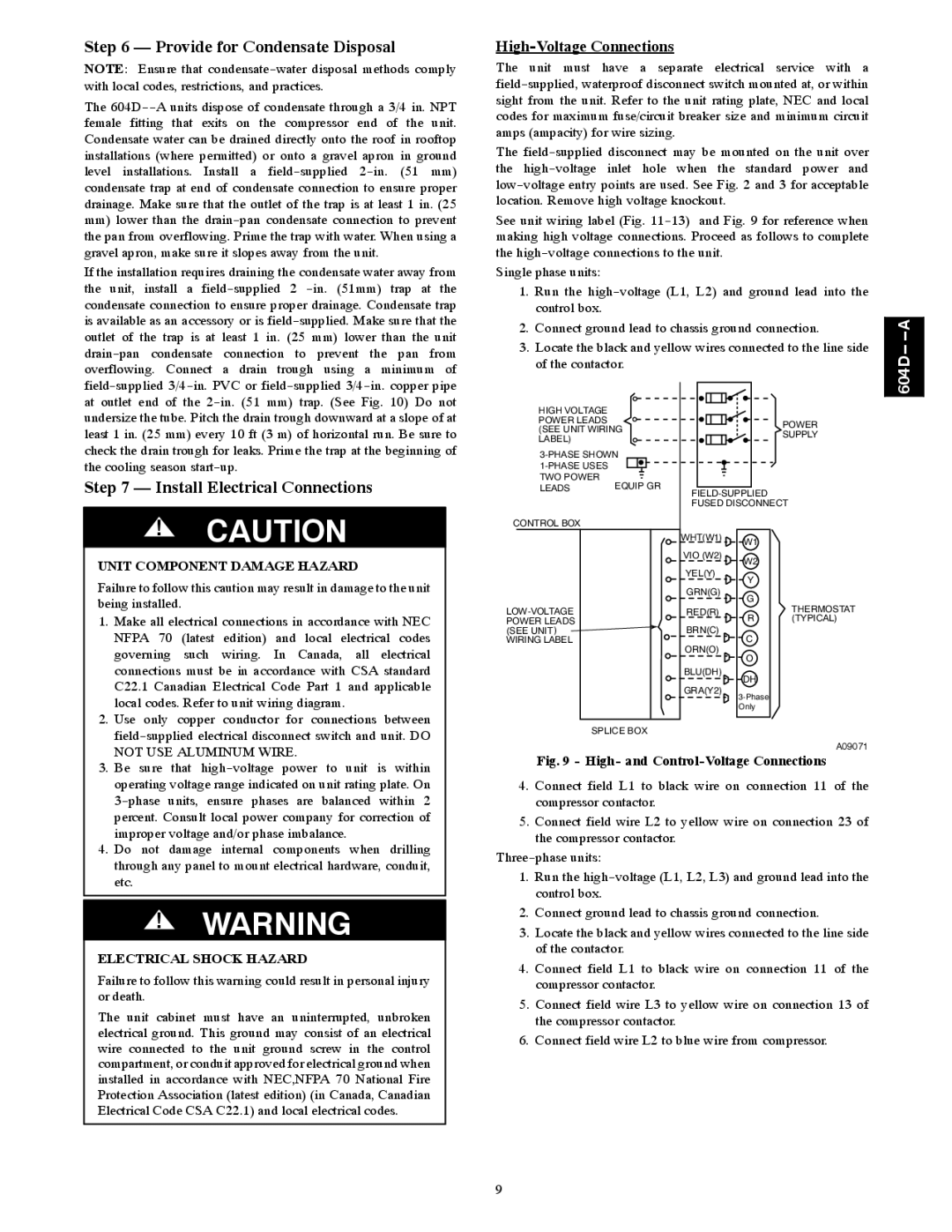604D--A specifications
The Bryant 604D--A is a remarkable heating and cooling unit designed for both efficiency and performance, making it an ideal choice for homeowners seeking optimal climate control solutions. Its impressive array of features, technologies, and characteristics sets it apart in the HVAC market.One of the standout features of the Bryant 604D--A is its advanced two-stage cooling system. This design allows the unit to adjust its cooling output based on the current temperature and humidity levels, which ensures a comfortable indoor environment while optimizing energy consumption. This two-stage operation is particularly beneficial during transitional seasons when temperatures fluctuate, providing a quieter operation and increased efficiency.
The Bryant 604D--A incorporates high-efficiency compressor technology that maximizes cooling capability while minimizing energy usage. This energy-efficient operation is further enhanced by its excellent SEER (Seasonal Energy Efficiency Ratio) rating. By achieving a high SEER rating, the 604D--A not only promotes energy savings but also contributes to lower utility bills, making it an economically sound investment for homeowners.
Another key characteristic of the Bryant 604D--A is its durable construction. Built with quality materials, this unit is designed to withstand varying weather conditions, ensuring longevity and reliable performance over the years. Its robust design also minimizes vibrations and noise, making it a quieter option compared to many competing systems.
Smart technology integration is also a significant highlight of the Bryant 604D--A. It features wireless connectivity, allowing users to control their heating and cooling settings remotely through a smartphone app. This modern convenience enables homeowners to adjust their indoor climate on-the-go, enhancing user comfort and convenience.
Additionally, the Bryant 604D--A is equipped with an advanced filtration system that helps to improve indoor air quality. By capturing dust, pollen, and other particles, this filtration system ensures that the air circulating within the home remains clean and healthy.
In conclusion, the Bryant 604D--A is a high-performance HVAC unit that excels in energy efficiency, durability, and convenience. With its advanced technology, quiet operation, and user-friendly features, it stands as a premier choice for those looking to elevate their home comfort while maintaining cost-effectiveness and sustainability. Whether for new installations or as a replacement for an outdated system, the Bryant 604D--A is undoubtedly a leader in modern climate control solutions.

